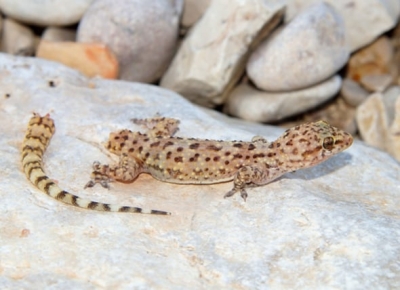
Most, but not all, lizards have the ability to “drop” their tails. According to Margaret Wissman, DVM, avian and exotic veterinary consultant, reptiles such as green iguanas and bearded dragons will drop and regrow their tails, while others, such as crested geckos, can lose their tails but will not regrow them.
This defense mechanism, termed “caudal autonomy,” happens when a lizard is grabbed by the tail or feels threatened, says Lisa Abbo, DVM, MS, at Woods Hole Science Aquarium and the Capron Park Zoo in Massachusetts. When this occurs, the tail separates from the body along a natural fracture line and continues to move independently from the body, likely to distract the predator and to allow the lizard to escape. This defense is often a last resort, after the lizard has used other less-costly attempts at escape.
“A lizard’s tail won’t drop if, say, your dog is barking at it,” said Wissman. However, it might drop if a person accidentally steps on it, grabs it, or a heavy object falls on it, she added.
Tail regrowth is a fascinating research topic among scientists, said Abbo. Tail regrowth can take weeks to months and depends upon environment, diet and a host of other factors. The new tail may be shorter and different in color or texture from the original tail, and research has shown that regenerated tails are often made up of long tubes of cartilage (rather than vertebrae) and contain longer muscles that span the length of the new tail. At first, the new tail may look like a stub on your lizard until it is able to grow back to a decent length, said Wissman. Also, the regrown tail may be a more muted brown color than the original, brighter colored tail.
Credit : PetMD
Picture Credit : Google




